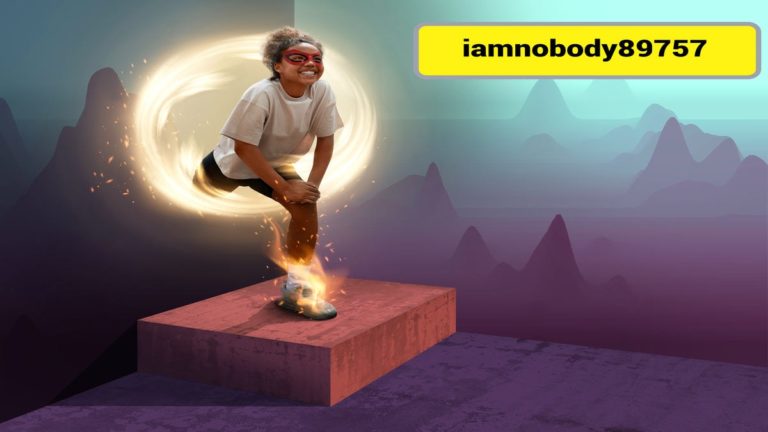TR2 Games: A Trip Down Memory Lane
As you peruse the latest offerings in high-tech virtual reality gaming, your mind wanders back to simpler times. Those were the days when a few pixels and rudimentary sounds were all it took to ignite your imagination. You reminisce about a time when games didn’t rely on ultra-realistic graphics to captivate players. If you came of age in the late 90s and early 2000s, chances are you have fond memories of TR2 games. Also known as MUDs (Multi-User Dungeons), these text-based roleplaying games provided an escape into fantastical realms without the need for high-performance computers.
Though primitive by today’s standards, TR2 games created vibrant communities and fostered lifelong friendships. Despite their simplicity, these games hold a special place in gaming history and in the hearts of those who experienced them. Join us on a nostalgic journey as we rediscover these influential games.
Table of Contents
A Brief History of TR2 Games
Originating in the late 1990s as a modest developer specializing in real-time strategy (RTS) games, TR2 Games made a significant splash with their inaugural title, Total Reconnaissance 2 (TR2), hitting the shelves in 1999. Surpassing all expectations, TR2 garnered a global following, boasting over 3 million copies sold and firmly establishing TR2 Games as a frontrunner in the RTS realm.
Over the ensuing decade, TR2 Games unleashed four sequels within the TR2 series, each iteration surpassing its predecessor with refined graphics, sophisticated AI, and innovative multiplayer modes. Notably, TR2 3 and TR2 4 are hailed as quintessential classics within the RTS genre. Concurrently, TR2 Games ventured into developing other beloved RTS franchises such as Galaxy Conquest and Desert Storm.
However, by 2010, the waning popularity of the RTS genre prompted TR2 Games to pivot towards first-person shooters (FPS), culminating in the launch of the TR2: Special Forces series. This strategic shift proved fortuitous, propelling TR2 Games into a prosperous new frontier. Presently, TR2 Games continues to cater to the diverse preferences of its dedicated fanbase by developing both RTS and FPS titles.
Across two decades of operation, TR2 Games has captivated millions of gamers and pushed the boundaries of both the RTS and FPS genres. The iconic TR2 series remains a cornerstone in RTS history, setting benchmarks and influencing countless subsequent titles.
For enthusiasts of RTS and FPS alike, TR2 Games epitomizes an era of groundbreaking innovation, leaving an indelible mark on the landscape of interactive entertainment. As they embark on ventures into new genres, TR2 Games remains poised to craft yet more industry-defining experiences, ensuring a promising future lies ahead.
Popular TR2 Game Franchises
In 1996, the Tomb Raider franchise debuted with its inaugural game, introducing gamers to the iconic Lara Croft, a British female archaeologist-adventurer. Delving into perilous tombs and uncharted territories across the globe, players embarked on thrilling quests to unearth ancient artifacts and long-lost treasures.
Tomb Raider (1996)
Renowned for its groundbreaking gameplay and cinematic flair, the original Tomb Raider game garnered widespread acclaim. Players assumed the role of Lara Croft as they navigated her through perilous traps within ancient tombs and dense jungles on a quest to secure the coveted Scion artifact. Its triumph led to the creation of numerous sequels and spin-offs over the ensuing decade.
Tomb Raider: Legend (2006)
Following a four-year hiatus, Eidos Interactive breathed new life into the franchise with the release of Tomb Raider: Legend. This sequel reimagined Lara’s origins and introduced advancements in graphics, physics, and combat mechanics. Legend swiftly garnered both commercial success and critical acclaim, reigniting enthusiasm and revitalizing confidence in the series.
Tomb Raider (2013)
In 2013, Crystal Dynamics embarked on a fresh interpretation of Lara Croft’s origins with the Tomb Raider reboot. Stranded on a perilous island, a young Lara faces a harrowing battle for survival while unraveling the island’s dark mysteries. With a grittier and more realistic approach, this reboot garnered widespread acclaim, securing numerous Game of the Year awards and reaffirming Tomb Raider’s position as a premier action-adventure franchise.
Spanning over two decades, the enduring appeal of the Tomb Raider series lies in its unforgettable characters, immersive settings, and captivating blend of action, exploration, and puzzle-solving. For longtime fans, these games offer a nostalgic journey back to the classic adventures of the ’90s and early 2000s. Meanwhile, newcomers have the opportunity to discover firsthand why Lara Croft has solidified her status as a gaming icon.
Notable TR2 Games Through the Years
Between 1997 and 2000, the Tomb Raider 2 (TR2) series saw the release of some of its most remarkable titles. Expanding upon the foundation laid by the original Tomb Raider game, these installments introduced a host of new features that elevated both graphics and gameplay to new heights.
Tomb Raider 2 (1997)
One year following the debut of the original Tomb Raider, TR2 propelled Lara Croft on a daring mission to retrieve the Dagger of Xian, spanning iconic locales such as Venice and the Great Wall of China.
This sequel broadened the array of weapons available to players and introduced exhilarating vehicular segments for Lara to navigate. Celebrated for its meticulously crafted level design, TR2 played a pivotal role in solidifying Lara Croft’s status as a cultural icon.
Tomb Raider III: Adventures of Lara Croft (1998)
In TR3, Lara embarked on exhilarating escapades across India, the South Pacific, and Antarctica. Introducing innovative gameplay elements like rope swinging, stealth mechanics, and diverse vehicles, this installment garnered acclaim from critics for its varied settings and compelling storyline.
While TR3 achieved commercial success, some critics noted that the sheer quantity of levels may have compromised the overall quality of the experience.
Tomb Raider: The Last Revelation (1999)
Taking place in the mystique of Egypt, TR4 delved into Lara’s formative years and her intricate bond with mentor Von Croy. Introducing fresh elements like the capacity to lock on to adversaries and perform strategic strafing maneuvers, the game garnered favorable reception.
Nonetheless, certain critiques surfaced regarding aspects of the control system and camera mechanics. Ending with a gripping cliffhanger, TR4 left players on edge as Lara found herself ensnared within the confines of a tomb.
Tomb Raider Chronicles (2000)
TRC revisited Lara’s escapades preceding TR4, unfolding across diverse locales like Rome, a German U-Boat, and a Russian submarine. While some commended the variety of settings, others found the level design lacking in quality, resulting in mixed reviews. Originally intended to conclude the original series, TRC marked the end of an era until the franchise underwent a reboot in 2006.
Pioneering in their era, the early Tomb Raider games introduced pioneering features that left an indelible mark on the action-adventure genre. Despite their dated aspects by contemporary standards, they persist as timeless classics that catapulted Lara Croft into the pantheon of gaming’s most iconic characters.
The Legacy and Influence of TR2
The Tomb Raider 2 (TR2) games have had a lasting impact and influence on gaming that continues today.
Pushing the Boundaries of Graphics
Upon its 1997 release, TR2 revolutionized gaming with its groundbreaking 3D graphics, which were hailed as stunning and cutting-edge. The game’s expansive and immersive environments expertly captured the essence of navigating ancient ruins and untamed jungles.
Lara Croft was portrayed with lifelike fluidity and realistic movement, breathing unprecedented life into the character. These pioneering graphics set a new benchmark for action-adventure games, serving as a source of inspiration for numerous titles in the years that followed.
Defining and Popularizing a Genre
TR2 laid the foundation for and popularized the action-adventure genre, seamlessly intertwining elements of combat, exploration, and puzzle-solving. Since then, this genre has blossomed into one of the most revered and enduring in gaming history.
Drawing inspiration from TR2’s formula, acclaimed franchises such as Uncharted, Prince of Persia, and Assassin’s Creed have emerged, offering players a similar fusion of gameplay mechanics that test both intellect and reflexes.
Creating an Iconic Protagonist
Lara Croft has ascended to the status of a gaming icon, emerging as one of the most instantly recognizable characters in the industry. Her introduction in TR2 epitomized her trademark blend of style, athleticism, intellect, and independence.
Lara’s presence fundamentally reshaped the portrayal of female protagonists in gaming, underscoring that a woman could anchor a thriving action-adventure franchise. Her enduring legacy has served as a wellspring of inspiration for numerous other protagonists, solidifying her position as a symbol of empowerment.
Sparking a Multimedia Franchise
The unprecedented success of TR2 sparked the expansion of Tomb Raider into a multimedia juggernaut, encompassing movies, comic books, theme park attractions, and more. This broad appeal resonated with audiences globally, showcasing the ability of games to transcend traditional digital boundaries. While the cross-media proliferation of gaming IPs has become commonplace in contemporary times, TR2 and Lara Croft blazed the trail as pioneers in this regard.
TR2’s groundbreaking and influential legacy will forever be etched into the annals of gaming history. Its timeless gameplay mechanics and iconic protagonist continue to captivate and enchant fans even two decades later, underscoring the enduring impact and significance of the game.
What Happened to TR2 Games?
TR2 Games emerged as a prominent video game developer and publisher during the late 1990s and early 2000s, gaining renown for their widely acclaimed Tomb Raider series featuring the iconic adventurer Lara Croft. At the zenith of their success, TR2 Games launched several hit Tomb Raider titles for both PlayStation and PC, solidifying Lara Croft’s status as a cultural icon and a trailblazer for women in the gaming industry.
However, the mid-2000s marked a challenging period for TR2 Games. Escalating competition in the action-adventure genre, coupled with lukewarm reviews and sales for some of their releases, posed significant hurdles. The company struggled to adapt to new gaming consoles like the Xbox 360 and PlayStation 3, and was slow in embracing emerging business models such as downloadable content (DLC) and free-to-play games.
In 2007, TR2 Games faced a pivotal moment as it was acquired by a larger publisher and integrated into one of their internal studios. The Tomb Raider intellectual property (IP) eventually found a new home with another studio, while a considerable portion of the remaining TR2 staff faced layoffs. The closure of the TR2 brand and office marked the end of an era.
The downfall of TR2 Games serves as a cautionary narrative for the video game industry. To endure, developers and publishers must adeptly navigate shifts in technology, design trends, monetization models, and audience preferences. Remaining competitive requires taking calculated risks while maintaining profitability. Unfortunately, TR2 Games faltered in adapting swiftly enough, and despite Lara Croft’s ongoing legacy, the company that birthed her succumbed to the evolving landscape.
The video game industry, characterized by its volatility, offers substantial rewards with vision, innovation, and adaptability. Companies that successfully build beloved brands and craft genre-defining experiences can thrive.
However, vigilance is paramount to avoid the fate suffered by TR2 Games—a pioneering entity eclipsed by the very forces it helped set in motion. The history of TR2 Games underscores the remarkable progress in the gaming world and the inevitable casualties left in its wake, while Lara Croft persists as a symbol of the industry’s exciting potential.
Conclusion
Clearly, TR2 Games played a pivotal role in the formative years of many individuals during the 80s and 90s. The straightforward yet challenging gameplay, coupled with the unforgettable 8-bit music and graphics, transported players to enchanting realms of adventure. Despite the remarkable technological advancements since then, the nostalgia associated with these retro games remains potent. Fond recollections include gathering around the TV or computer with friends and family, collaboratively tackling puzzles, and conquering virtual adversaries.
For those fortunate enough to have experienced the golden age of TR2 games, these memories endure. While these games may seem rudimentary by contemporary standards, they ignited creativity and fostered connections, shaping childhoods and cultivating enduring bonds through the shared delight of gaming. Although TR2 games are relics of the past, their profound impact continues to resonate.






